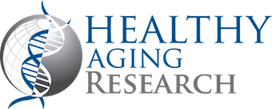
Healthy Aging Research
Open Access
ISSN: 2261-7434

ISSN: 2261-7434
Muhammad Ahsan Khan*, Alishba Mahmood, Mariam Saeed, Syed Arif Ali and Fauzia Imtiaz
Background: Age-Associated Macular Degeneration (AMD) has been a pre-eminent purpose of blindness and a rely of network fitness challenge because of its excessive prevalence in older populations above 40 years of age. Literature regarding AMD cognizance many of the city Pakistani populace is very restricted. Therefore, the goal of this observe was to conduct a comprehensive survey at the city populace of Karachi, Pakistan, to assess their information and preventive practices (KAP) regarding AMD. Any other objective was to look the impact of demographic elements on information level in individuals and to assess the principle source of records regarding the sickness a few of the participants.
Methods: The observe was conducted on 385 members over a length of six months among September 2022 and February 2023. To be expecting the KAP stage regarding AMD among participants, the knowledge section of the questionnaire changed into divided into 17 recommendations that included 1 correct definition of the disorder, 12 proper/wrong chance factors and four proper/incorrect signs of the disorder. Individuals who were capable of solution ≥ 9 guidelines, i.e., >50% effectively, have been taken into consideration to have “above average” information. Data were analyzed the use of SPSS model 24.0. Descriptive facts of individuals’ sociodemographic elements, knowledge, mindset and preventive practices were analyzed. Chi-rectangular tests have been used to examine sociodemographic factors with the know-how catalog.
Results: Most effective 161 (41.8%) individuals knew approximately AMD, at the same time as 224 (58.2%) did no longer know approximately it. The definition of the ailment turned into successfully selected by 86 (53.4%) individuals. the best threat factors (weight problems, age and own family history of AMD, smoking, loss of multivitamins, alcohol and unprotected publicity to mild) were diagnosed by means of 11.2%, 23.9%, 17.1%, 11.9%, 9.6%, 8.3% and 9.4%, respectively. The proper signs and symptoms of AMD, including blurring of imaginative and prescient, were replied by means of 109 (28.3%) contributors, and visible hallucinations and flashes of light had been answered effectively by way of 29 (7.5%) participants. “Above average” information approximately AMD become determined to be statistically significant with the level of training (p<0.01) and month-to-month profits (p<0.02) of contributors. Social media/newspaper/television (23.40%) changed into the maximum commonplace source of information amongst members.
Conclusion: Those figures call for an immense need for eye health schooling campaigns, both widespread or targeted closer to AMD, to boom the level of consciousness and preventive and health-searching for behaviors the various populace. Tasks for public health are probably launched to explicitly address those gaps.
Published Date: 2025-03-17; Received Date: 2024-03-13